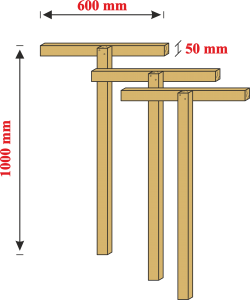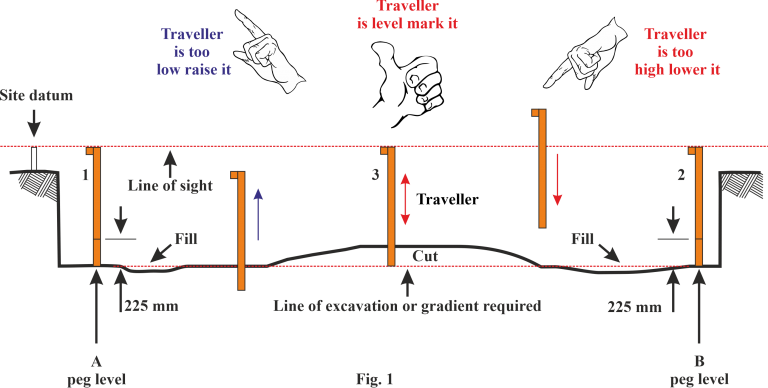
Teaching and learning resources for the construction industry with NVQ and Diploma Assessment Criteria
The use of boning rods to establish levels is one of the very earliest construction technologies that is still in everyday use.
The term ‘boning rod’ comes from an Old English term for a slope or gradient, a bone.
It’s one of those notions that’s so simple, that it’s hard to improve upon, and it’s only the advent of cheap laser levels over the past few years that has seen this technique become less common.

Boning Rods
The operation of transferring levels can be speeded up, by using boning rods.
Set pegs ‘A’ and ‘B’ as shown in Fig. 1, stand one boning rod on each peg and then move rod 3 which is known as the Traveller, and this can be held in position at any point between the two established rods.
An operative at one of the established levels then sights through over the Traveller to the fixed level B, and instructs the operative holding the Traveller to raise or lower it accordingly until it ‘bones-in’ between the fixed level A and fixed level B.
Once the Traveller is at the correct level, the operative can mark the pen at the base of the staff or adjust the height of a peg to the required level,
which is called the traveller on to the intermediate pegs.
When all of the level pegs have been positioned the bottom of the trench is trimmed to give the thickness of concrete foundation required, i.e. 225 mm.

Boning Rods